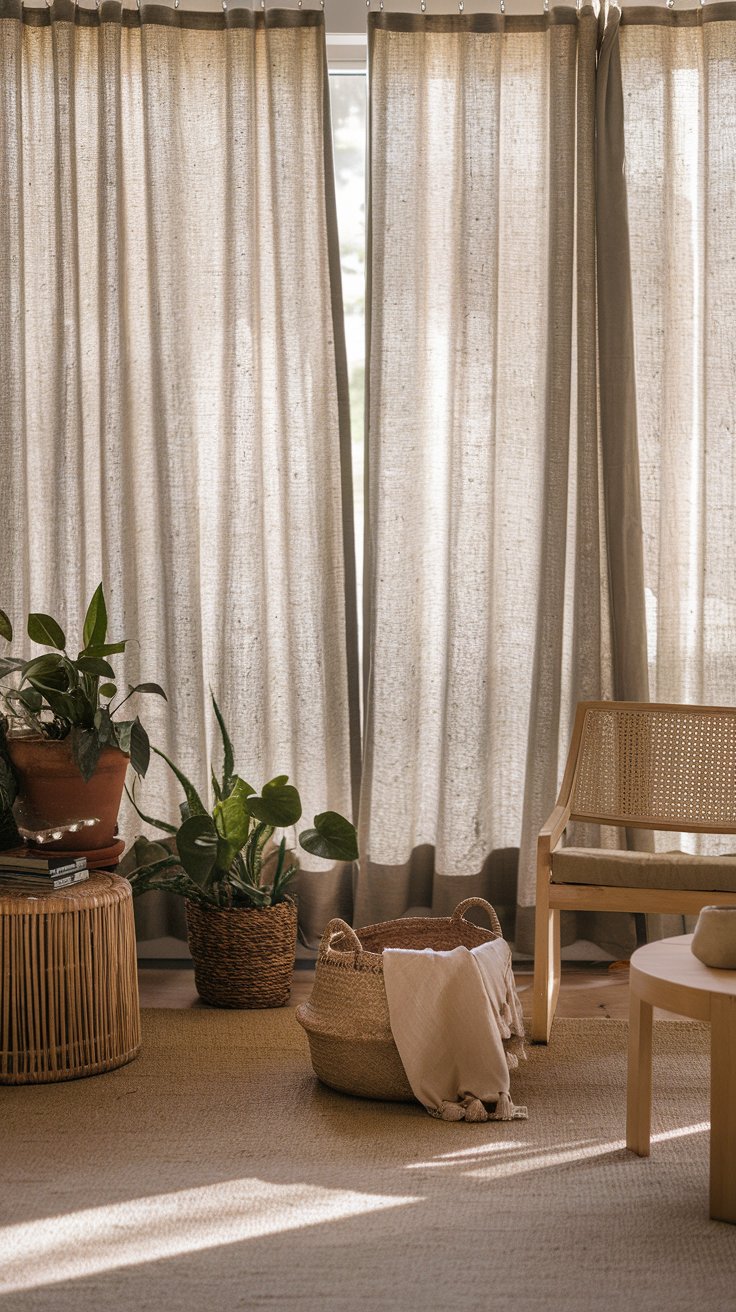DIY Organic Cotton Curtains: Eco-Friendly Window Treatments for a Green Home
Table of Contents
Introduction
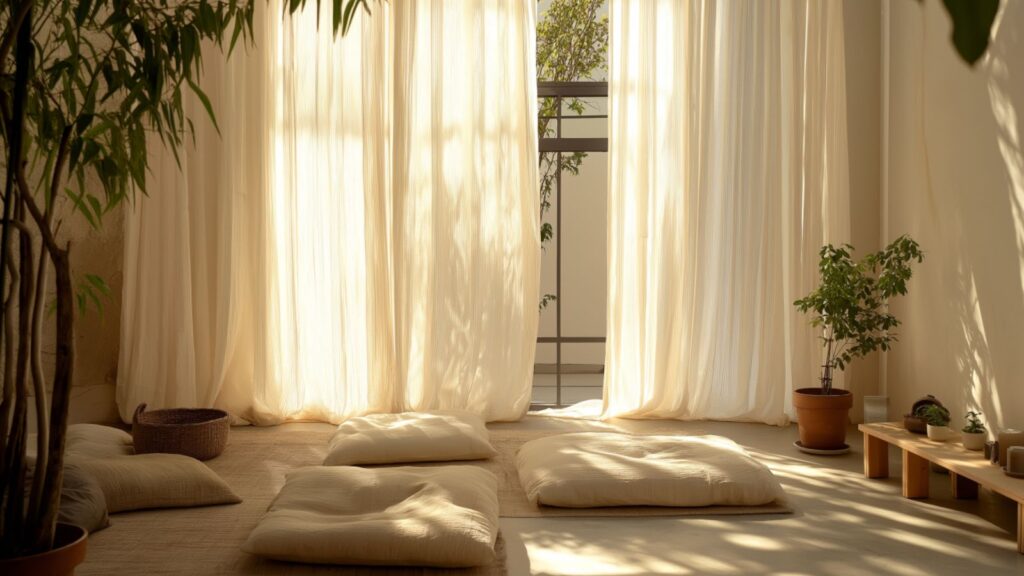
Did you know that conventional curtains often contain synthetic fabrics, chemical dyes, and flame retardants that can release toxins into your home? If you’re striving for a healthier, more sustainable lifestyle, DIY organic cotton curtains are a fantastic way to reduce environmental impact while adding style to your space.
Organic cotton is free from harmful pesticides, synthetic fertilizers, and chemical dyes, making it an excellent choice for eco-conscious homeowners. Plus, making your own curtains allows you to customize the fabric, size, and style to perfectly fit your home decor. In this guide, you’ll learn everything from fabric selection to step-by-step sewing instructions to ensure your curtains are both beautiful and environmentally friendly.
Outline
1. Why Choose Organic Cotton Curtains?
- Eco-Friendly Benefits: Free from pesticides, biodegradable, and sustainably sourced.
- Health Advantages: Reduces indoor air pollution by avoiding synthetic materials.
- Aesthetic Appeal: Soft texture, natural look, and breathable fabric for a cozy ambiance.
- Cost Comparison: Organic cotton vs. synthetic curtains—long-term benefits.
Table: Pros & Cons of Organic Cotton Curtains
| Feature | Organic Cotton | Synthetic Fabrics |
| Eco-Friendliness | High | Low |
| Durability | Medium-High | High |
| Breathability | Excellent | Poor |
| Price | Moderate | Low |
2. Selecting the Right Organic Cotton Fabric
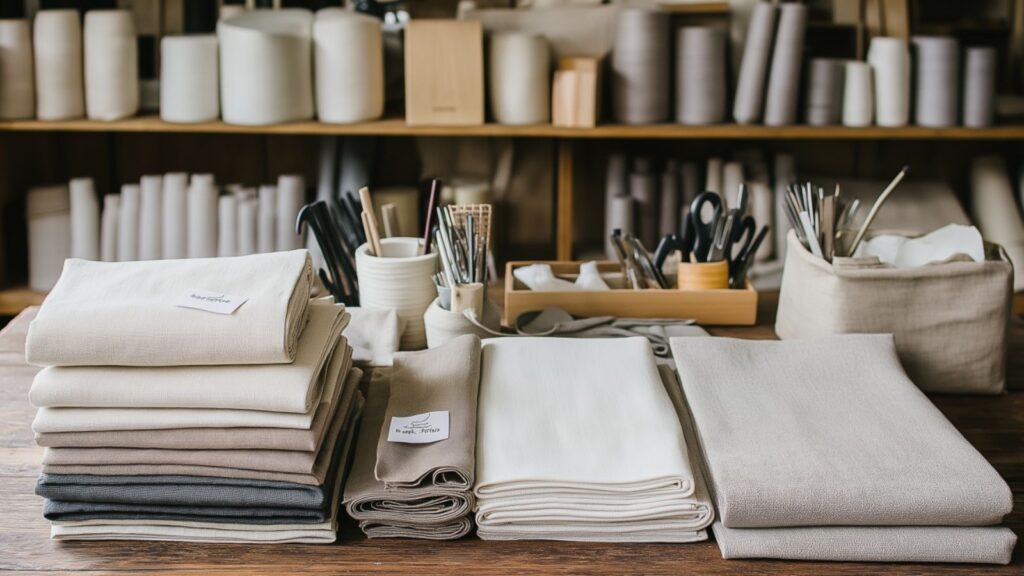
- Types of Organic Cotton: Muslin, canvas, twill, and voile—differences and best uses.
- Choosing the Right Weave & Weight: Light vs. heavy fabrics for different room settings.
- Certifications to Look For: GOTS (Global Organic Textile Standard), OEKO-TEX.
Table: Comparison of Organic Cotton Fabric Types
| Fabric Type | Texture | Best Use |
| Muslin | Lightweight, breathable | Sheer, soft curtains |
| Canvas | Thick, durable | Blackout or heavy drapes |
| Twill | Medium weight, structured | Standard living room curtains |
| Voile | Soft, flowing | Airy, decorative curtains |
3. Tools & Materials Needed for DIY Organic Cotton Curtains
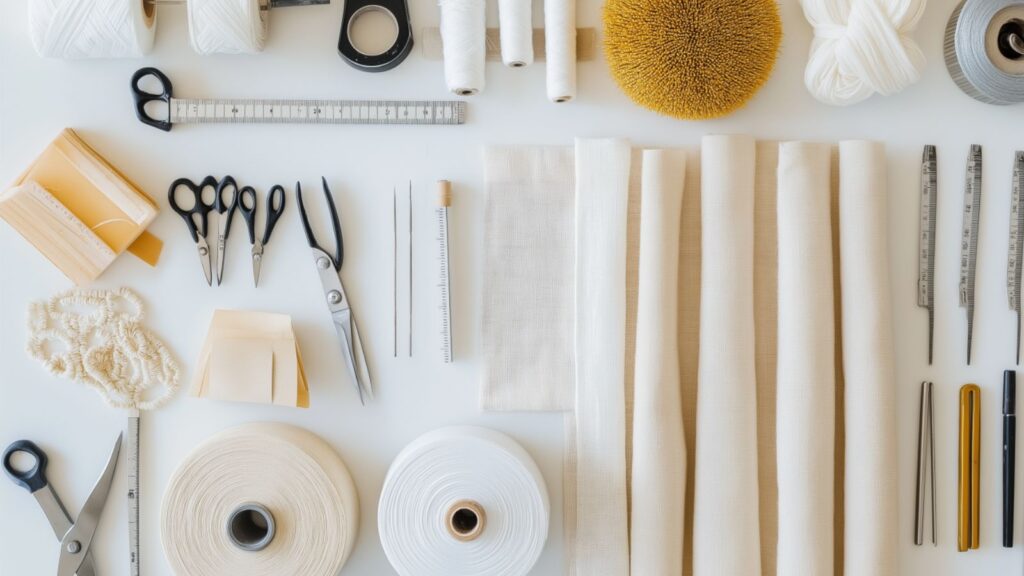
- Organic cotton fabric (pre-washed to avoid shrinkage)
- Measuring tape, fabric scissors, straight pins
- Sewing machine (or hand-sewing tools for a no-machine option)
- Natural fabric dyes (optional for customization)
- Curtain rods, rings, or ties
4. Step-by-Step Guide to Making DIY Organic Cotton Curtains
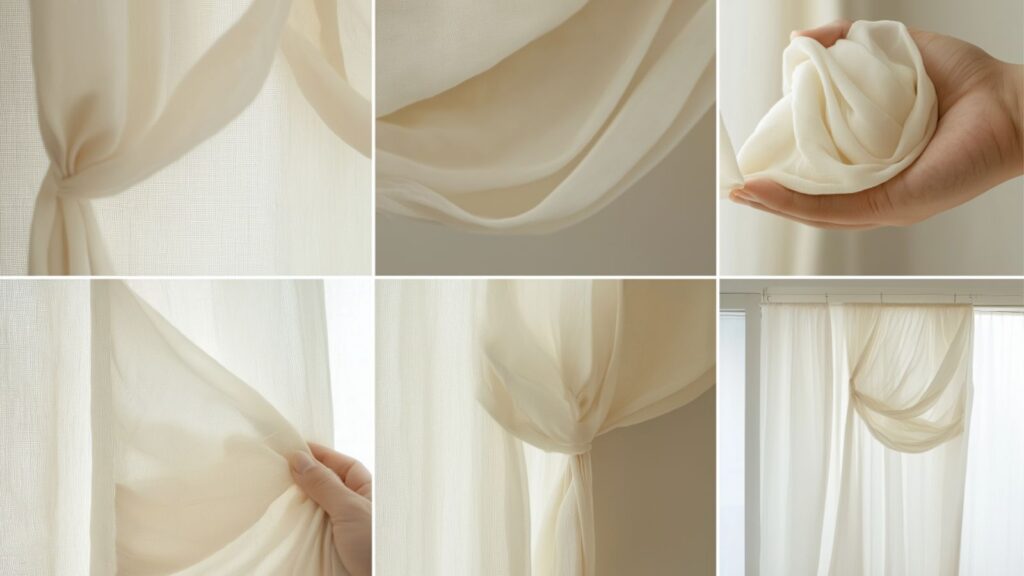
- Measuring & Cutting: Calculate fabric dimensions, adding extra for hems.
- Sewing Basics: Straight stitch, hemming, and rod pocket creation.
- Adding Lining (Optional): Thermal or blackout options using organic wool.
- Alternative No-Sew Method: Using fabric tape or iron-on adhesive.
Table: Measurement Guide for Common Window Sizes
| Window Type | Width x Height (inches) | Recommended Fabric Length |
| Standard | 36″ x 48″ | 40″ x 55″ |
| Large | 48″ x 72″ | 52″ x 80″ |
| Floor-Length | 60″ x 84″ | 64″ x 90″ |
5. Natural Dyeing & Customization Tips

- Eco-Friendly Dyes: Using turmeric, beetroot, avocado pits for natural coloring.
- Tie-Dye & Ombre Effects: Techniques for a unique design.
- Adding Decorative Elements: Organic lace, embroidery, or block printing.
6. Maintaining & Cleaning Organic Cotton Curtains
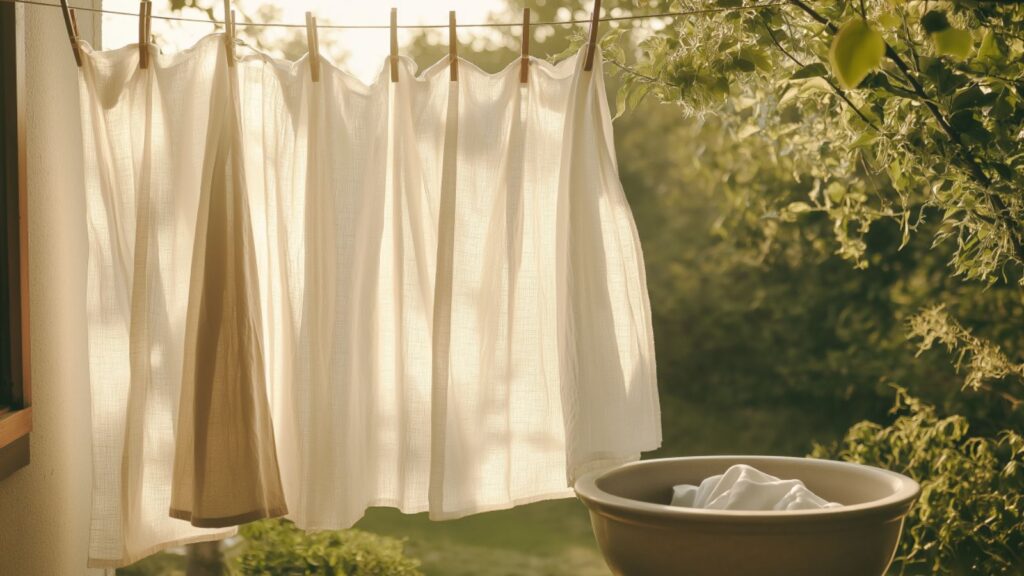
- Washing Tips: Gentle, cold water washing with eco-friendly detergent.
- Drying & Ironing: Air-drying to reduce energy use and avoiding high heat.
- Longevity Tips: Rotating curtains seasonally to reduce wear and sun damage.
Detailed Content Expansion
Step-by-Step Guide to Making DIY Organic Cotton Curtains
Creating your own organic cotton curtains is a simple and rewarding project. Follow these detailed steps to craft beautiful, eco-friendly window treatments:
1. Measuring & Cutting Fabric
Before cutting your fabric, measure your window’s dimensions. Add at least 4–6 inches to the width and height to accommodate hems and rod pockets. For a flowing effect, consider adding extra fabric width for pleats or gathers.
2. Sewing the Edges & Hems
- Bottom Hem: Fold the fabric edge 1 inch, press with an iron, then fold again to encase the raw edge. Secure with a straight stitch.
- Side Hems: Repeat the process for the left and right sides.
- Top Rod Pocket: Fold down 3–4 inches, creating space for a curtain rod. Stitch securely, leaving an opening for easy sliding.
3. Adding a Lining (Optional)
For those who need blackout or thermal curtains, line the organic cotton with organic wool or thicker organic cotton. Sew it onto the main fabric along the edges.
4. No-Sew Alternative
If you don’t have a sewing machine, use iron-on hem tape. Simply fold and press with a hot iron to seal the fabric edges.
| Step | Action |
| 1 | Measure and cut fabric |
| 2 | Hem bottom and sides |
| 3 | Sew or attach rod pocket |
| 4 | Optional: Add a lining |
| 5 | Hang and style |
Natural Dyeing & Customization Tips
Adding color to your curtains using natural dyes enhances their organic appeal. Try these DIY dyeing methods:
1. Choosing a Natural Dye
- Turmeric: Creates a warm golden-yellow hue.
- Beetroot: Produces a soft pink or deep red.
- Avocado Pits: Gives a peach or blush tone.
2. Dyeing Process
- Boil water and add your chosen natural dye.
- Soak fabric for at least 30 minutes, stirring occasionally.
- Remove, rinse with cold water, and air-dry.
| Dye Ingredient | Color Produced |
| Turmeric | Golden Yellow |
| Beetroot | Soft Pink |
| Avocado Pits | Peach/Blush |
Conclusion
DIY organic cotton curtains are a stylish, sustainable way to improve indoor air quality while reducing your environmental footprint. By selecting organic fabrics, using natural dyes, and following eco-friendly maintenance practices, you create a healthier home that reflects your values. Plus, crafting your own curtains allows for full customization, ensuring the perfect fit and aesthetic. Whether you’re going for an airy, sheer look or a heavier, insulating design, organic cotton curtains are a great investment in both style and sustainability.

